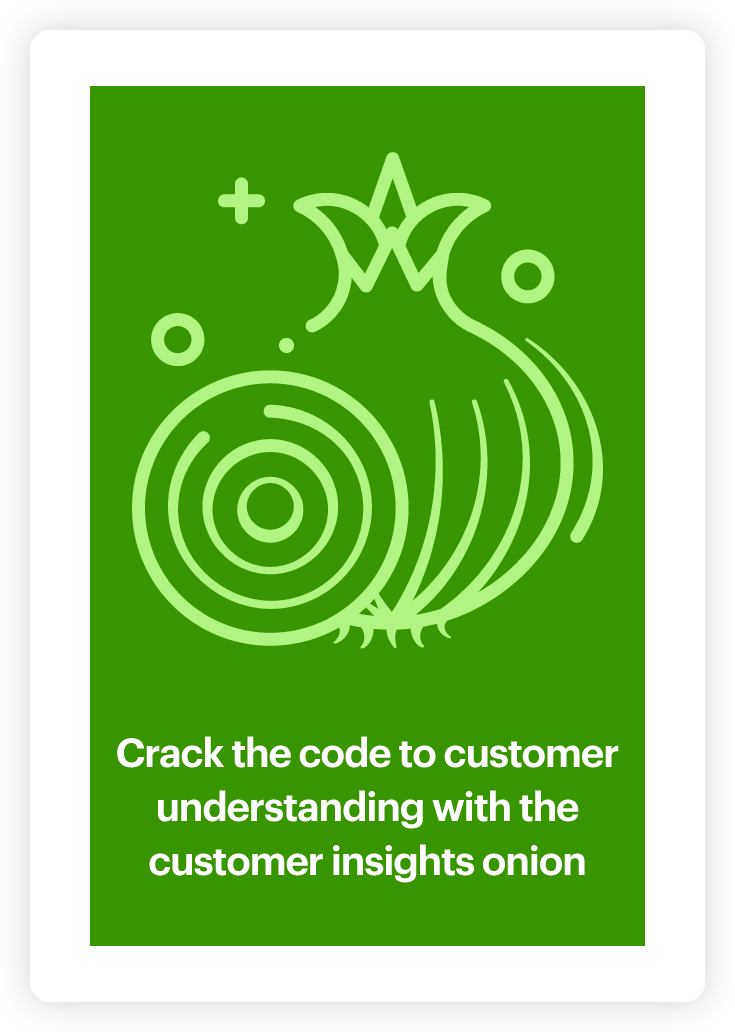Customer experience analytics: The key to happy customers

Regardless of what your company sells, customer experience (CX) is your primary product. CX influences what and how often customers purchase and, perhaps most importantly, how they talk about your brand to others. How do we know? 86% of consumers are willing to pay more for great CX and 49% of customers have made impulse purchases after receiving more personalized CX.
But let’s start from the beginning: what is meant by customer experience?
Customer experience is defined as the cumulative impression left on a consumer resulting from all their interactions with a brand and their products or services.
To deliver great CX you need to put a strategy in place that serves to measure, analyze and improve customer experience – this requires customer experience analytics.
In this guide, we’ll break down everything you need to know about CX analytics, examples of how it can be applied and how it can help you achieve your business objectives and boost customer satisfaction.
What is customer experience analytics?
Customer experience analytics refers to the process of collecting and analyzing customer data to better understand customer needs, pain points and general experiences with your brand, products or services. CX analytics enables you to measure and ultimately improve CX.
The importance of customer experience analytics
You might be wondering why you should care about CX analytics in the first place. The answer is straightforward: customer experience analytics produces powerful customer insights that will help you:
- Boost customer engagement
- Foster customer loyalty
- Increase customer satisfaction
- Deliver personalized experiences
- Make data-backed, customer-centric decisions
- Spot trends and patterns in the customer journey
Which data sources can be used for customer experience analytics?
In order to conduct customer experience analysis, you need to first collect rich customer feedback data. Four of the most common sources include:
- Customer experience surveys: Open-ended survey responses from customer experience surveys – particularly NPS, CSAT and CES surveys – are one of the richest data sources to assess CX. Among other things, these types of surveys help businesses conduct customer journey analytics by uncovering trends and patterns and connecting them to different points in the customer journey.
- Online reviews: Through platforms like Amazon, TrustPilot, Google Reviews or G2 you can access customer reviews for your customer experience analysis. Reviews provide detailed, qualitative feedback, which is typically attached to a star rating or score that can be used to segment positive and negative feedback.
- Customer service and chat transcripts: Transcripts of telephone, email or chat interactions are a great way to gain insight into and improve your customer service and sales practices.
- Customer conversations on social media: Consumers use social media to discuss general brand perception with their network and voice concerns and positive feedback they have regarding a particular product or service. Using social listening tools, you can collect organic consumer conversations from channels such as Twitter and Reddit.
Customer experience analytics use cases
Having gathered sufficient customer feedback data, it’s time to consider, how to best conduct your customer experience or customer journey analytics. There are three primary ways businesses go about the analysis process:
1) Track changes in customer feedback over time:
One way of conducting customer experience analysis is by comparing customer feedback data from different time periods to uncover trends and changes in feedback and sentiment. Among other things, such comparisons can help you assess the success of product and service improvement efforts, as well as marketing campaigns.
Imagine that your goal is to improve customer experience by implementing chat-based customer support. In this case, you would gather feedback before and after implementing the respective changes and compare the data sets to determine whether your actions have had the intended effect.
2) Uncover differences across customer segments:
Customer needs and expectations can vary widely across different customer segments. This is why it is crucial to hone in on what unites and differentiates each of your target audiences. To uncover differences and similarities across customer groups, you can segment customer feedback data in line with demographic points such as age, gender, location or occupation or behavioral attributes like average purchase value or frequency of purchase.
Let’s say you’re in the process of launching a new product and want to ensure you appeal to Gen Z as well as to Millennials. In that case, you might want to compare reviews by these two different customer segments to determine product development priorities that will resonate with both audiences.
3) Pinpoint drivers of positive and negative CX:
Comparing positive vs. negative customer feedback from NPS, CSAT or CES surveys or online reviews enables you to discover the drivers of customer (dis)satisfaction. While satisfaction scores will tell you how happy customers are, this type of analysis will help you understand why they feel the way they do. Equipped with these CX insights, you can double down on what customers like and implement improvements where necessary.
Many companies conduct post-purchase pulse surveys that ask customers to rate the product they bought. With this feedback in hand, you can group and compare good and bad reviews to uncover the strengths and weaknesses of your product. For instance, if you find out that customers complain about products malfunctioning shortly after purchase, you can pass this knowledge on to your product development team to inform product development priorities.
Improving customer service with customer experience analytics
Using Relative Insight, a leading fashion retailer wanted to scientifically analyze mystery shopper survey data to improve customers’ in-store shopping experience. Comparing advocates (NPS score of 9 or 10) and detractors (NPS rating of 6 or lower) allowed the retailer to pinpoint specific staff behavior that contributed to positive and negative customer experiences. Equipped with these insights, the fashion retailer created a new best practices training program for its sales associates and developed localized recommendations to address regional customer behavior nuances.
Master your masses of feedback data with a customer experience analytics tool
There’s one thing we haven’t talked about: efficiently managing the analysis of what can often be large volumes of feedback data. Not only is sifting through customer feedback data manually time-intensive and cumbersome, it also runs the potential for bias and error inherent in manual coding.
This is where customer experience analytics tools come into play. By using AI and natural language processing, customer experience analytics platforms help you automate the most time-consuming parts of the analysis process.
Boosting customer satisfaction with customer experience analytics
So how do you apply customer experience analytics to benefit your business objectives? By using the insights you generate to create a customer experience that is personalized, efficient and meets customer expectations. To ensure that the insights from your CX analysis are used to take action, it is paramount that you close the feedback loop and effectively communicate the ‘so what’ of the insights to your stakeholders. If your business is taking action that is driven by CX insights, you will ultimately be able to foster customer loyalty and satisfaction and drive growth.
Relative Insight makes reaching your customer experience objectives through customer experience analytics efficient and easy! Curious to find out more? Download our customer insights framework or book a no-commitment discovery call with one of our CX experts.
